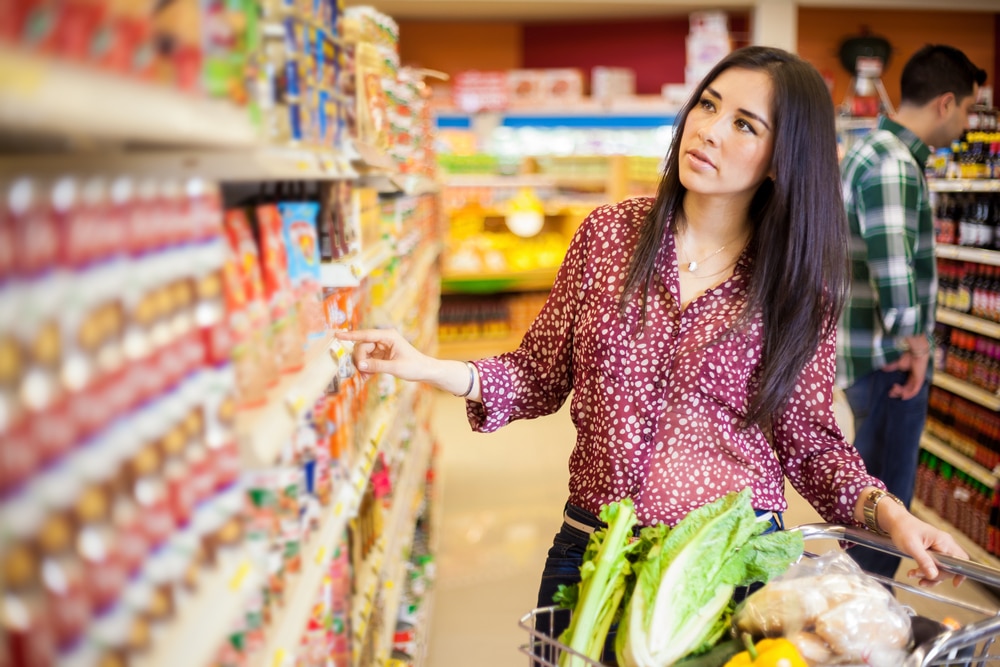While the placement of products on the shelves at a supermarket may seem completely random to a consumer, companies understand that behind the scenes, a shelf placement strategy is at the heart of product and brand success. A study by Nielsen reviewing 600 product launches across multiple markets and categories found that one-third of the initiatives failed as a function of insufficient marketing support.
This is why it’s essential for brands to look at innovative methods of directing shoppers to their products—whether they’re launching a new product, looking to increase market share, or increase brand awareness. Brands looking to tap into the various types of product positioning strategies should consider doing so with the assistance of mobile technology.
Common Drawbacks of CPG Brand Shelf Placement Strategies
No shelf placement strategy is perfect. Developing an effective shelf placement strategy comes with its fair share of drawbacks:
- The Basics: CPG brands have long considered how basic aspects like messaging, color, and lighting of signage, product grouping, and shelf height direct consumer decision-making. While this strategy is an obvious starting point, competitors are likely going above and beyond this common strategy, leaving nothing to chance.
- Tech Analysis: Kellogg’s developed a virtual reality-based headset designed to track shoppers’ eye movement to evaluate the ideal merchandising positions. While this approach resulted in an 18% increase in sales for Kellogg’s, it’s unclear how this tech will work in reality. After all, participants walked down virtual aisles in the test. Many of the variables (and distractions) shoppers encounter in real life can’t be precisely replicated. More studies are ultimately needed to determine the effectiveness of eye-tracking data as a way of guiding the development of an effective shelf placement strategy.
- Seamless Ecomm: Brands like Hershey’s understand the importance of providing a seamless e-commerce/supermarket experience. Can’t find one of their products in-store? No problem; simply scan the UPC code on your mobile device, purchase it online, and have it delivered directly to you. While this strategy works great for brand loyalists who are in the store, explicitly looking for your products, it does little to bring new eyes to your brand. If the item is out-of-stock, they’ll likely turn to another brand to purchase a competing product.
- Display Advertising: Prominent placement and end-cap aisle displays are the ideal attention-grabbers. The sky’s the limit in terms of creativity and impact. Cosmetic brand retailer Kiehl’s designed an interactive in-store display to showcase a new line of fragrances. Each scent was paired with a location. When shoppers picked up a bottle, a biplane projected across the table to a country on a map, inviting customers to click through animations and learn more about the perfume ingredients. The downside is that this type of marketing can be very expensive to develop and implement. With finite space available, not every product or brand can enjoy the spotlight.
The Benefits of Using Mobile in Your Shelf Placement Strategy

In many ways, leveraging a mobile shopping app succeeds where others may fail:
- It’s new and exciting. The widespread public perception is that technology increasingly solves our day-to-day woes. They are willing to download a new app they see as beneficial to their shopping experience.
- It bridges the gap between worlds. Shoppers are able to access information about products virtually while still in the physical store. This creates the perfect moment to influence decision-making when it matters most, generating awareness and influencing in-the-moment impulse buys.
- It captures new converts. Through mobile technology, brands can interact with new prospects the moment they walk into a retail store. A mobile road map can direct shoppers to a physical location where the products are located, whether on the top shelf, at eye-level, or on the bottom shelf.
- It’s affordable. Why spend thousands of dollars on a high-tech in-store display, when you can provide similar video content and supplemental material via a consumer’s mobile phone? Scanning QR codes to access content is a process shoppers are comfortable with after several years of trial.
Brands looking to incorporate mobile technology in their shelf placement strategy should consider Shopkick.
Shopkick Offers an Engaging Way to Build Brand Awareness
Brands looking to incorporate mobile technology in their shelf placement strategy should consider Shopkick. When Georgia-Pacific launched a new line of paper plates, the brand partnered with Shopkick to build awareness and drive trial and consideration. In store, Shopkick incentivized users to seek out the product, allowing them to see and feel the difference in Dixie Ultra Deep Dish Plates, compared to their usual paper plate. Then, using Shopkick’s innovative 2D image recognition and post-scan video features, the brand highlighted differentiating product details and delivered a branded video while the product was in shoppers’ hands. By rewarding consumers and engaging them throughout the shopping journey, Shopkick increased trial and consideration and drove shoppers to purchase. Ultimately, 16 million people engaged with the branded content and 50% of buyers said they had not been planning to purchase prior to engaging with the brand through Shopkick.
Looking to incorporate mobile in your CPG brand shelf placement strategy?. See how our partners use our innovative shopping app to increase traffic, improve brand affinity, and engage repeat customers in new and exciting ways. Contact us to learn more about how Shopkick is the perfect complement to your shelf placement strategy.
Image courtesy of antoniodiaz



